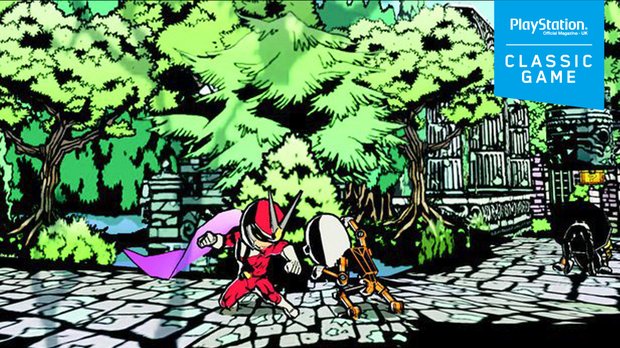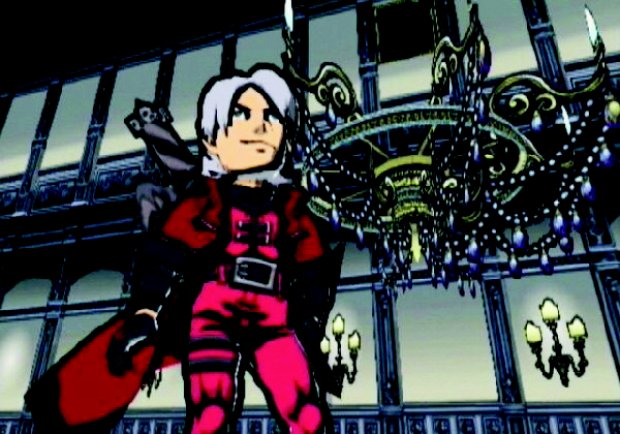Viewtiful stranger: OPM takes a look back at the iconic Viewtiful Joe
To many, Kamiya is hardcore gaming. Over the course of his career, firstly at Capcom and now as one of the key figures at splinter studio Platinum Games, Kamiya has forged a reputation for designing action games that are bright and breezy enough to be accessible and enjoyable to beginners, and yet mechanically deep enough to reward those with the skill and patience to delve deep into their inner workings.

But the true genius of Kamiya’s works is that they encourage you to get better with honey rather than vinegar. They’re designed such that getting intimate with their combat systems results in a game that’s not only more fun to play, but more fun to watch, too. Bayonetta, for example, is a plodding, functional brawler in unrefined hands, but watch a professional go to work, bouncing from one end of the screen to the other like a Gothic Tigger while wiping out swathes of enemies in a flurry of hair-whips, and you’ll appreciate just how thickly layered the systems in Kamiya’s games are.
But if his works are beautiful, then Viewtiful Joe is the only one of them that finds time to pout for the cameras. It’s a 2D scrolling beat-’em-up set in an alternative universe called Movieland, and appropriately enough both its story and its mechanics are told through the language of cinema.

You star as Joe, a movie-obsessed anime freak who, in true UniLAD style, uses the kidnapping of his girlfriend as an excuse to strap on a lycra bodysuit and become the superhero of his own personal B-movie. Thrilled to no longer be just a regular Joe, our gung-ho hero has a whale of a time, peppering the action with cheesy quips and muscle flexes. He’s ready for his close-up, and you’re the director.
Joe’s flashy-but-basic array of punches and kicks are complemented by a set of over-the-top VFX powers – special effects tied to a recharging meter – that enable you to either slow down or speed up time, or zoom into the action to deliver extra damage. Often, your time manipulation skills are used to solve simple puzzles.
Pulling the handbrake up on father time, for instance, causes rotor-powered floating platforms to plummet to the ground. But the true value of the VFX powers is revealed in the heat of combat. If you attempt to clear waves of enemies using your fists alone, it’ll be a drawn-out, arduous slog. (Sound familiar?) Blend in a few VFX powers, however, and you can send huge long lines of enemies scattering like bowling pins in one fell swoop.

For example, if you slow down time just as an enemy is about to strike, you can dodge the attack, sending your assailant into a stun state, enabling you to knock him into his mates like a line of dominoes. Speeding up time, on the other hand, allows you to set opponents on fire from the sheer fury of your attacks. By deftly mixing and combining these powers with regular attacks, and with a little trial and error, you can discover methods that enable you to take out enemies with lifebars the size of airports in a matter of seconds.
Weekly digests, tales from the communities you love, and more
Viewtiful Joe came into being at a time when 2D games were seen as simplistic relics of a bygone era. We now know that 2D titles can be just as richly-layered and intricate as anything in 3D of course, but it took Kamiya, and his cinematic eye, to teach us that ‘hardcore’ isn’t measured by horsepower or complexity, but by the ingenuity of a game’s systems – and the imagination of the player sitting in the director’s chair.
Click here for more excellent Official PlayStation Magazine articles. Or maybe you want to take advantage of some great offers on magazine subscriptions? You can find them here.
We are Play magazine, the biggest-selling,100% independent, magazine for PlayStation gamers. Founded in 2021, it's brought to you by the same team of writers, editors, and designers as the Official PlayStation Magazine, with the same deep industry access, quality of writing, and passion for all things PlayStation. Follow us for all things PS5, PS4, and PlayStation VR.



